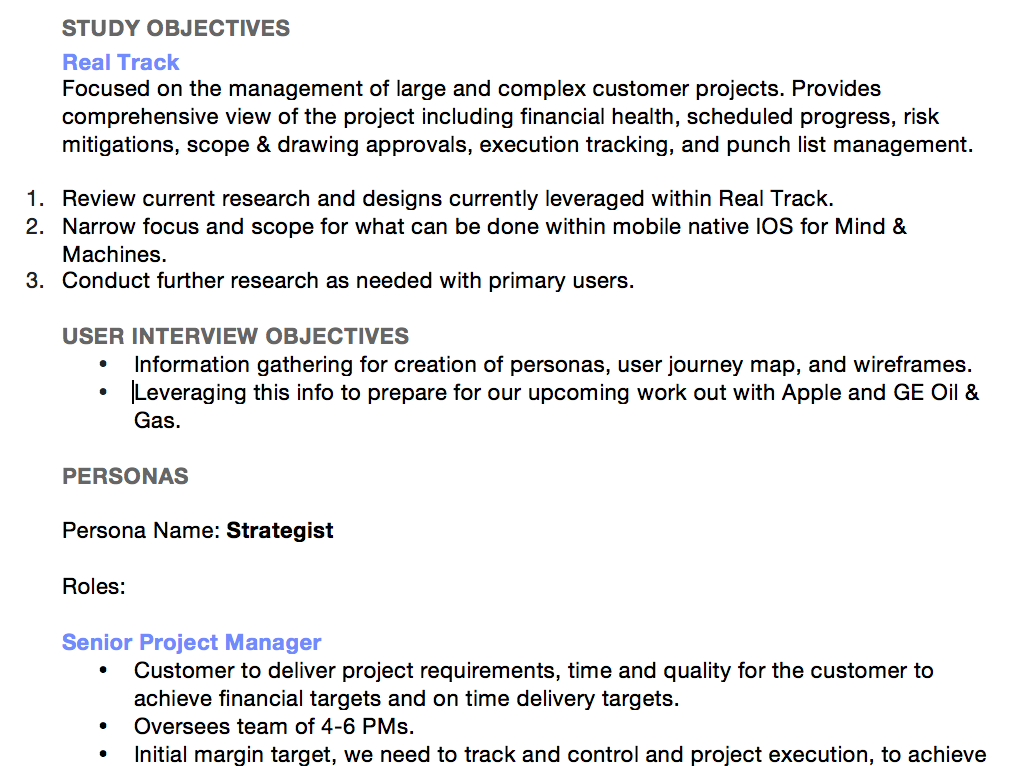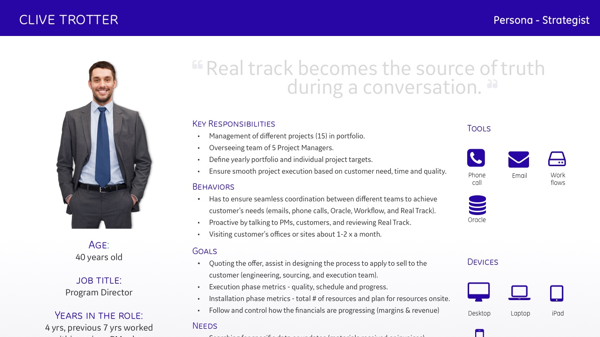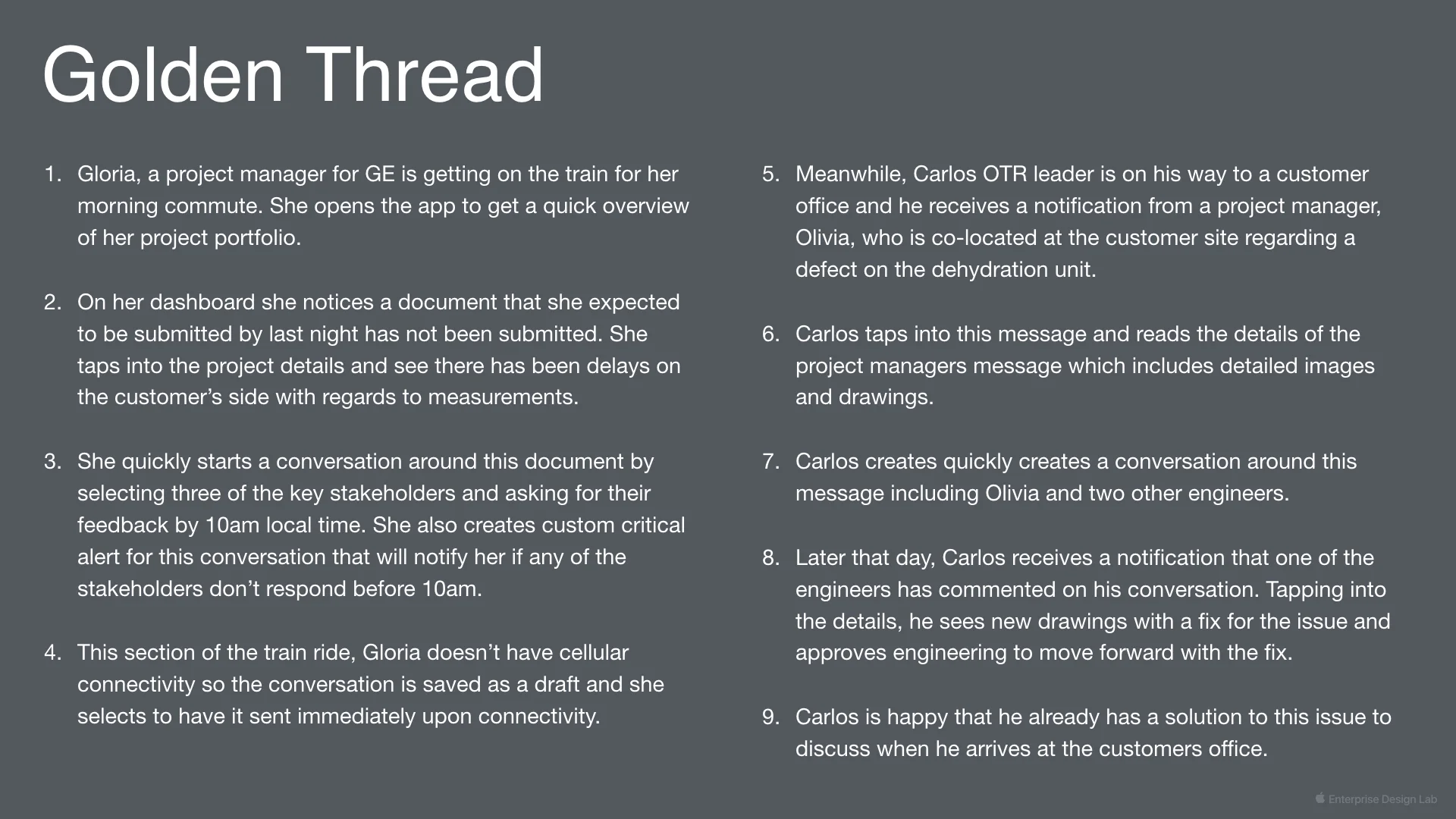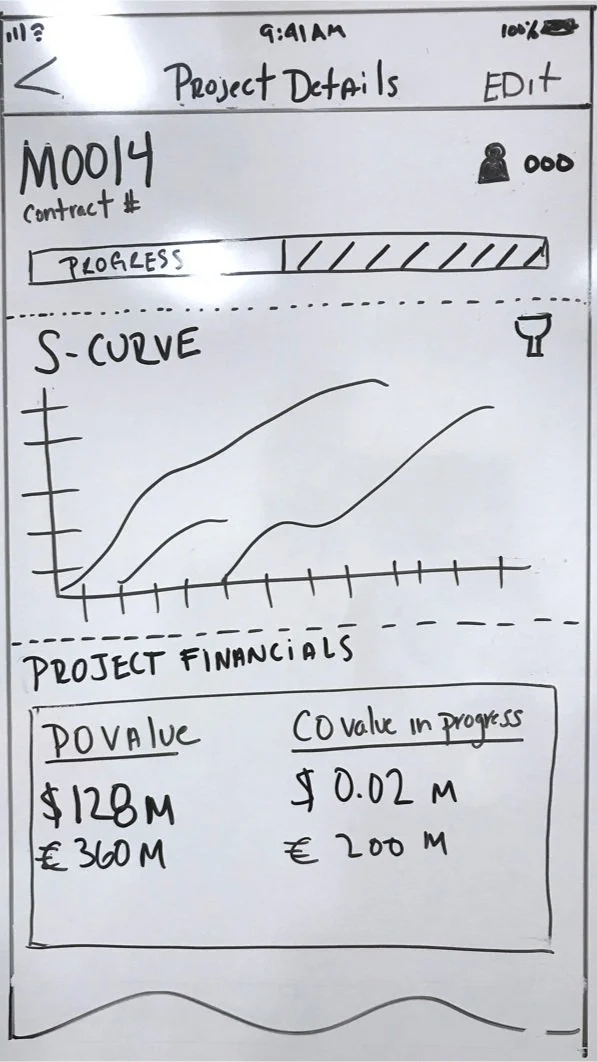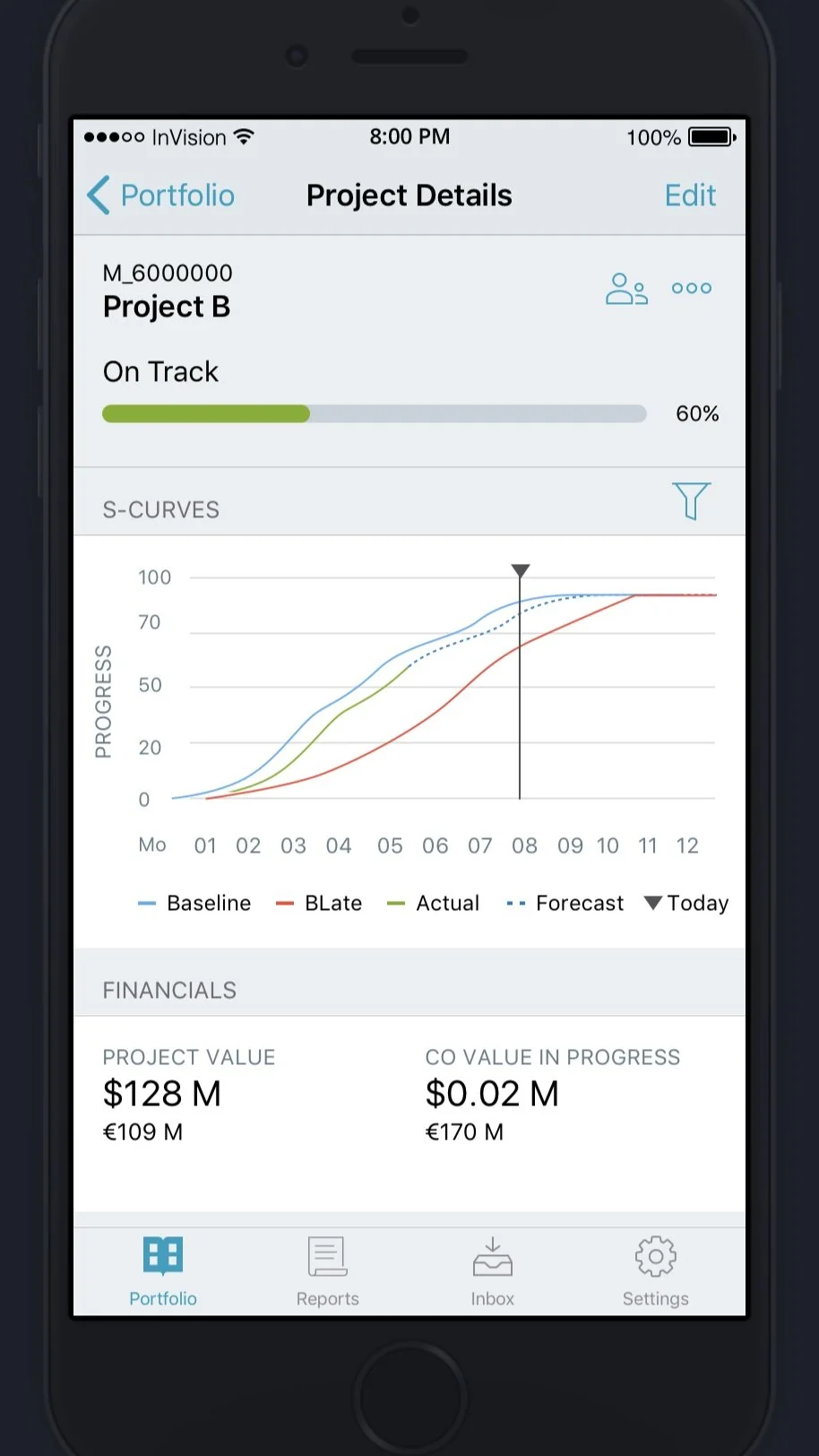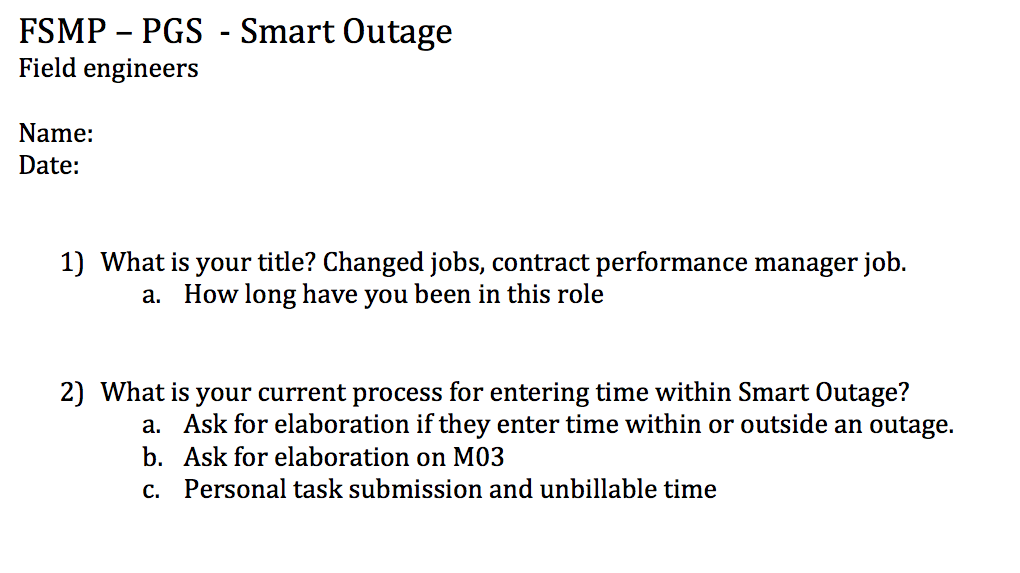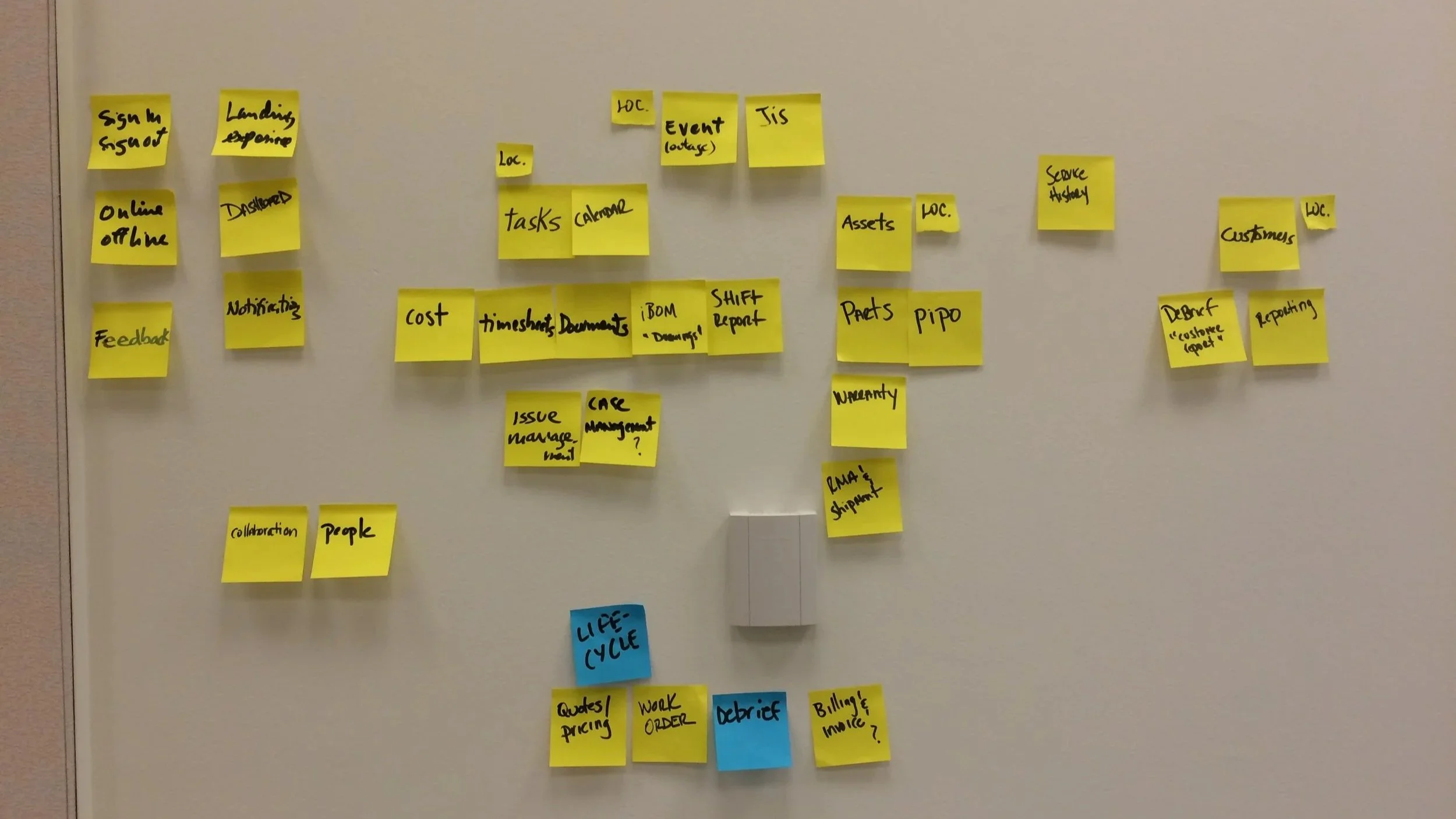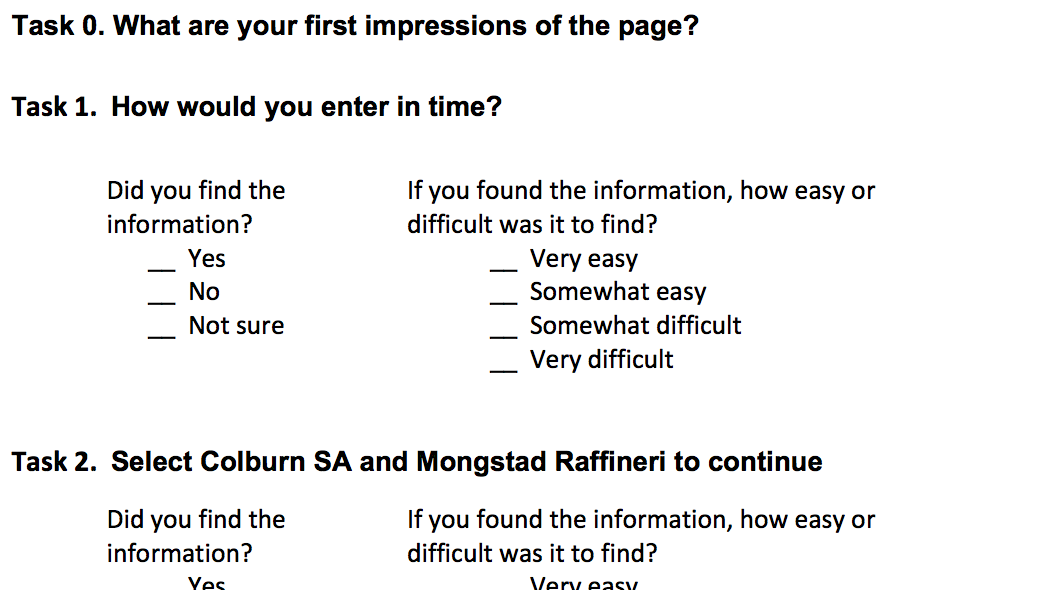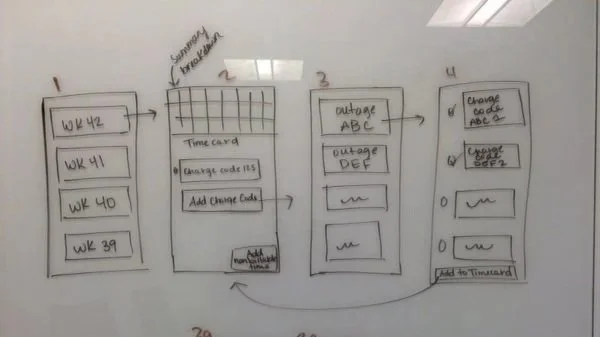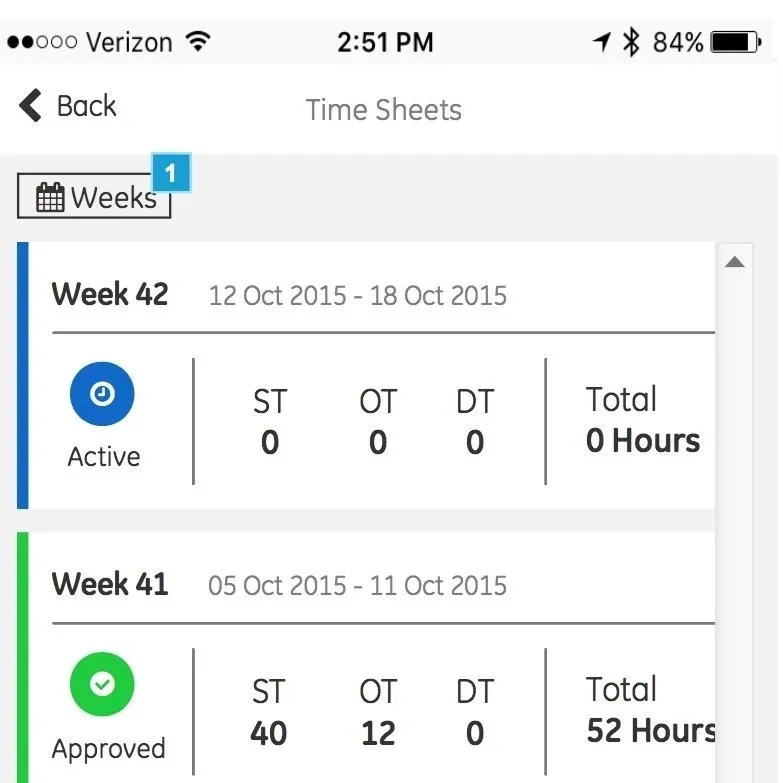
GENERAL ELECTRIC
High-Impact Innovation Team
As part of GE’s High-Impact Innovation Team, one of the few groups working across all GE businesses. I helped tackle strategic challenges by applying digital technologies and agile methods. Our team acted as an internal agency, driving innovation initiatives that spanned healthcare, aviation, and energy.
My role spanned the following:
Led strategy and user research to uncover opportunities and guide design direction.
Designed and prototyped interactions that translated emerging technologies into practical solutions for GE businesses.
Mentored junior designers and interns, fostering growth while ensuring design quality across projects.
Real Track
Overview
As part of GE’s partnership with Apple, I helped design a mobile project management application for GE’s Oil & Gas business. The goal was to boost project managers’ productivity while creating a solution that could scale across other GE businesses.
Because Oil & Gas project managers travel frequently which included visiting project sites, customer offices, and internal meetings, they needed reliable mobile access to project details, even in low-connectivity environments. By giving them the ability to track projects and share updates on the go, the app empowered managers to keep customers informed in real time and improved overall operational efficiency.
Process
Adapted design approach for an iOS-exclusive app, a unique departure from GE’s device-agnostic norm. In order to meet the needs of North American project managers who primarily used Apple devices.
Conducted and analyzed five user interviews to uncover needs, then translated insights into a proto-persona and user scenarios that guided design decisions.
Partnered with Apple’s design team in Cupertino during a three-day product planning workshop, validating user research and co-creating design directions.
Led iterative design cycles from sketches to high-fidelity prototypes, leveraging iOS 11 and GE’s Predix UI kits, while continuously refining solutions with users, product owners, and developers.
Solution
The result was a mobile app that enabled project managers to access and update project details anytime, anywhere — even in low-connectivity environments. By streamlining access to schedules, tasks, and updates, the app significantly improved both productivity and customer responsiveness.
Beyond Oil & Gas, the app was designed with reusability in mind, establishing a framework and interaction patterns that other GE businesses could adopt for their own project management needs. This scalability ensured broader business value from a single initiative.
Research Plan
Outlined research objectives and participant roles to guide discovery, ensuring our work addressed both business goals and project manager needs.
Analysis
Synthesized interview data through inductive coding, clustering insights into themes that directly informed design priorities.
Proto Persona
Developed proto-personas to capture project managers’ goals, frustrations, and workflows, keeping the design team aligned on user needs.
User Scenarios
Created user scenarios to illustrate how project managers would use the app in real-world contexts, validating value before building.
Sketches
Explored early concepts through rapid sketches, quickly iterating on layout and functionality with input from stakeholders.
Prototype
Produced high-fidelity iOS prototypes using Apple and Predix UI kits, tested with users to validate usability and refine interactions.
Field Vision
Overview
GE businesses such as Aviation, Healthcare, Power, and Renewables rely on field engineers to install and maintain critical assets. Much of their reporting process, however, was spread across disconnected Excel sheets and siloed programs, making it time-consuming to consolidate information for customers.
To address this, I helped design a mobile application that streamlined the product lifecycle process, from installation to maintenance thus giving field engineers a unified, offline-ready tool they could use directly on site. This solution eliminated the need to carry laptops into challenging environments and enabled engineers to deliver faster, more accurate updates to customers.
Process
Scoped and structured the project: As one of four designers, I led a UX pod of 15–20 developers, delivering designs and testing in two-week sprints over a 10-month timeframe.
Streamlined design consistency: Facilitated reconciliation sessions across design pods and built an Axure component library to improve efficiency and maintain consistency.
Leveraged prior work as a baseline: Evaluated GE Power’s existing Smart Outage app, conducting user interviews and usability tests to identify strengths, gaps, and opportunities for scalability.
Immersed in the field: Conducted on-site contextual inquiries to understand the real working conditions of field engineers, ensuring designs reflected practical constraints.
Iterated through validation: Sketched early concepts, translated them into prototypes, and validated with users, product owners, and developers, refining designs each sprint based on feedback.
Solution
The final Field Vision mobile app empowered engineers to manage time tracking and outage reporting directly from the field, even in low-connectivity environments. By consolidating fragmented spreadsheets and workflows into a single streamlined tool, the app reduced inventory issues, increased time sheet accuracy, and improved engineer responsiveness to planned and unplanned outages. The app established a scalable framework that could extend beyond GE Power to Aviation, Healthcare, and other GE businesses.
User Interview
Led structured interviews with field engineers to uncover how they track time and manage outages, identifying key pain points in the existing Smart Outage app.
Contextual Inquiry
Observed engineers onsite in real working conditions to capture environmental constraints and validate how mobile solutions could realistically support their workflows
Card Sort
Facilitated a card sort exercise to clarify terminology and prioritize features, ensuring the information architecture reflected how engineers think about their tasks.
Usability Test
Ran usability tests on Smart Outage to validate assumptions, pinpointing where workflows broke down and translating feedback into design refinements.
Sketches
Explored early design ideas through sketches, mapping the flow for entering and managing time cards and rapidly iterating based on team feedback.
Prototype
Designed and validated the weekly time sheet view, helping engineers track hours across multiple outages.
